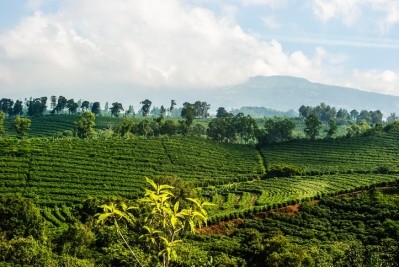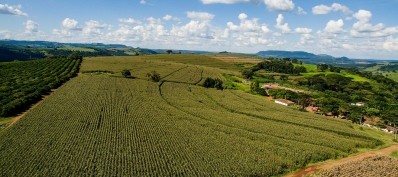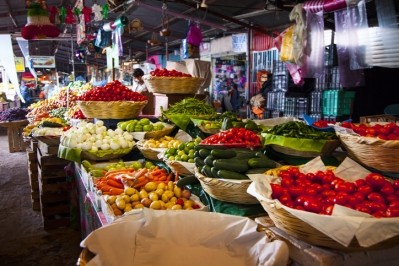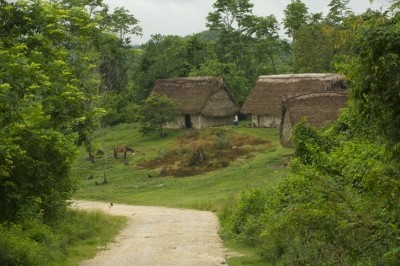'Planting trees to grow food': Inga cropping provides food security for farmers and organic crops for industry
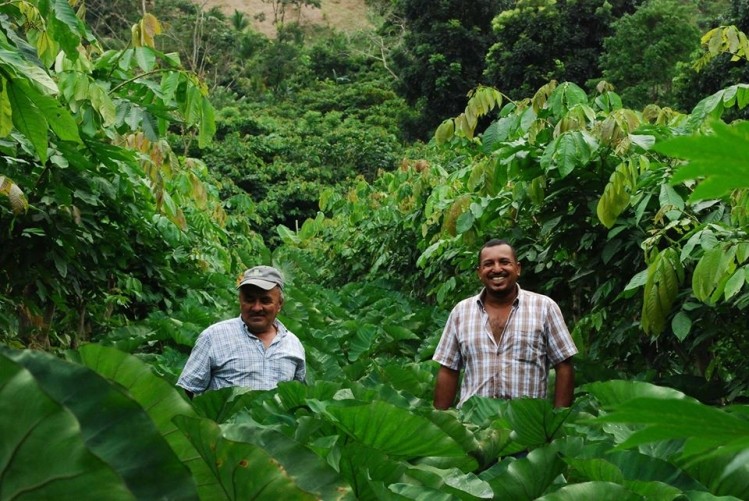
Alley cropping with Inga trees is an agroforestry technique developed by Mike Hands, who began researching soil chemistry and fertility at the University of Cambridge 35 years ago, and discovered that the nitrogen-fixing trees of the genus Inga, indigenous to Central America, are more effective in boosting yields than conventional alley-cropping species.
Inga trees grow easily from seed and tolerate poor, infertile and acidic soils while also improving soil fertility by fixing nitrogen and recycling phosphorous. The trees resist coppicing, which provides firewood for families, and some of the varieties produce edible fruit. Their leafy foliage prevents the sun from evaporating soil moisture and produces nectar that attracts ants, which provide natural pest control.
“The effect is this sustainable organic system where half of nature works for you. The inputs for the farming family are very low,” said Hands.
Inga tree alley cropping ensures food security in basic food staples but the tree also associates well with certain cash crops, such as black pepper, curcuma, ginger, pineapple, vanilla and passion fruit, which provides additional income to the farmers. When fruit trees such as cocoa are grown among the Inga trees, the agro-forestry model can support reforestation.
Harvesting food during a drought
The 10-year Inga alley cropping program run by the UK-headquartered Inga Foundation in Honduras is currently in year nine. So far it has regenerated 2,500 acres in northern Honduras working with around 300 families. Initially Hands said it was challenging to convince farmers that planting trees could help them grow food but the program Land for Life now counts 200 families on a waiting list.
“We wondered if a system developed by a gringo academic would be [acceptable] to families, and the answer was yes, people are now pouring in,” he told FoodNavigator-LATAM. “They love it, they love the firewood it produces and the fact you don’t have to do any weeding.”
Farmers were further convinced in 2015 and 2016 when El Nino brought violent storms and droughts, and Inga alley cropping was the only system that allowed families to grow basic grains during the period.
During a 2019 drought, farmers were able to harvest average to good yields of beans and maize even though not a single drop of rain had fallen during the crop cycle.
“The crop was using moisture conserved under the accumulation of organic soil material and the mulch of inga, which prevents the sun from evaporating it,” Hands said. “We can guarantee food security even during a drought.”
Cocoa processing plant
The next challenge for the Foundation is scaling up the project and developing a supply chain to add value to the farmers’ cash crops.
Over the course of the project, the Foundation has distributed a quarter of a million cocoa trees, including hybrids and varieties derived from the Mayans, which are now yielding “a heck of a lot of cacao”, according to Hands.
The Foundation is currently looking to raise the funds required to build a cacao processing plant in Honduras.
Inga alley cropping has generated interest at the Honduran Ministry of Natural Resources (MiAmbiente) and was endorsed by the Central American parliament although a lack of funds is holding back potential investment from these authorities.
“I am able to go to the big decision-makers – politicians, people running the UN and the Green Climate Fund – and say ‘look we have done this at landscape scale and it can be replicated. It’s not cheap and not quick but it’s highly effective and when people have this they don’t need anything else.”
Hands also has a message for the food industry. “There is a solution on the way, it addresses 11 of the 17 sustainable development goals (SGDs) with no negative impact on the remaining six, and it works. With the support of industry we can begin the process in which this forlorn plant can start to heal itself. In fact, we’ve already started so industry should just come on board.”
Stopping slash-and-burn in the tropics
“Slash and burn is a subsistence farming method used by millions of families in the tropics in which families cut down and burn a patch of forest in order to create an area of fertile soil on which they can grow their food.
"However, the soil fertility doesn’t last. Once cleared of trees and exposed to the strong tropical climate, the bare soil is rapidly stripped of nutrients. The first year of slash and burn generally gives a good crop, the next year less so and, by the 3rd year, crops often fail completely.
"This forces families who depend on slash and burn to keep clearing fresh areas of rainforest every few years, just to survive.”
Source: The Inga Foundation
